
If there’s one thing challengers for the 36th America’s Cup should avoid dwelling on, it is the record of the Defender, Emirates Team New Zealand. In a sport where few syndicates in its modern era survive more than three or four campaigns, and many disperse after one, ETNZ’s DNA was linked more than three decades ago.
ETNZ, and its predecessor, have won the Auld Mug three times, lost four Cup matches, with its worst showings being two losses in the challenger finals. The previous holder, Larry Ellison’s Oracle Team USA, folded after five campaigns, two of them victorious, while predecessor Alinghi won two and lost the third. The three current challengers can take comfort from the New Zealanders having stumbled more often than winning, and can hope that its own self‑assessment is just Cup swagger.
“Today we are stronger than we have ever been, not just with the people we have and the experiences we have been through, but understanding what is right and wrong, and what is required,” says Kevin Shoebridge, ETNZ’s chief operating officer.
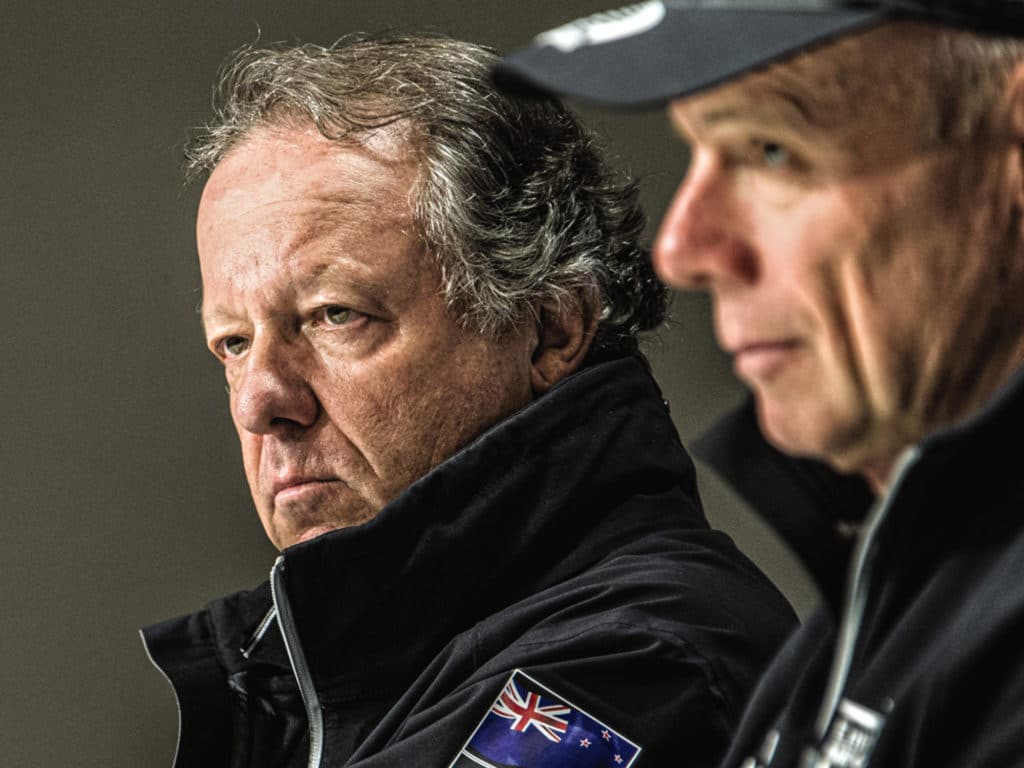
Shoebridge arrived at the start of New Zealand’s America’s Cup run, sailing with banker Michael Fay’s New Zealand Challenge, in Fremantle, Australia, in 1987. KZ7 was radical, with its fiberglass hull, but after 37 wins from 38 starts, the campaign that captivated a nation was upended by Dennis Conner’s Stars & Stripes.
The big lesson then: Having a fast boat doesn’t help if your opponent has an even faster one. “We were terribly naive,” Shoebridge says. “That was just a massive eye-opener into the world of the America’s Cup, without knowing anything about it.”
As the New Zealanders head into their 10th Cup campaign, this long-running DNA is its most exceptional, intangible and multilayered ingredient. Underpinning it is the way the Cup has been woven into the nation’s fabric since the mid-1980s economic revolution.
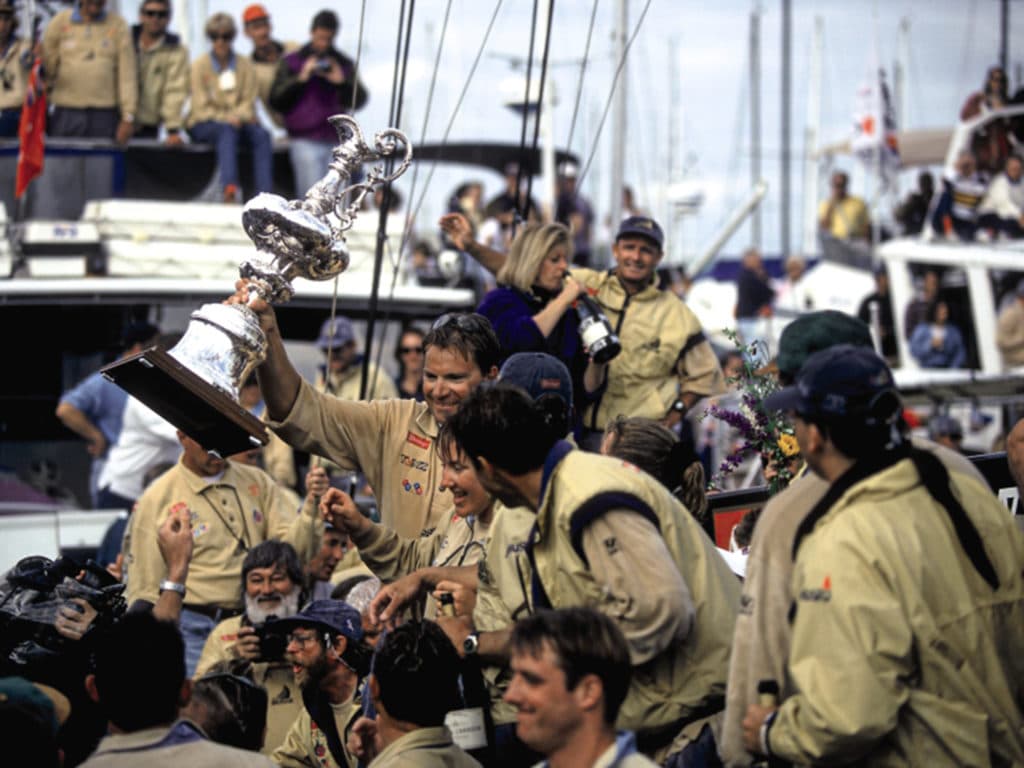
In 1984, the freshly elected Labor Government unleashed a period of economic deregulation, the share market boomed, and the country’s strong sailing heritage moved into the brash, big-money world of the America’s Cup, matching the heady spirit of the times.
Tens of thousands turned out for welcome-home parades, not just after the eventual Cup victories, but also after losses.
Those losses continued. The 1988 challenge with KZ1, was dispatched by Conner’s catamaran, and by three US courts where Fay had argued “unfair.” In 1992, Fay’s last hurrah, NZL20 took a 4-to-1 lead in the Louis Vuitton Cup Final, until its bowsprit was protested by the Italians of Il Moro, and the pendulum swung away. Three losing campaigns might have scuttled other teams, but for the New Zealanders, that’s where the longevity dividend began to pay.
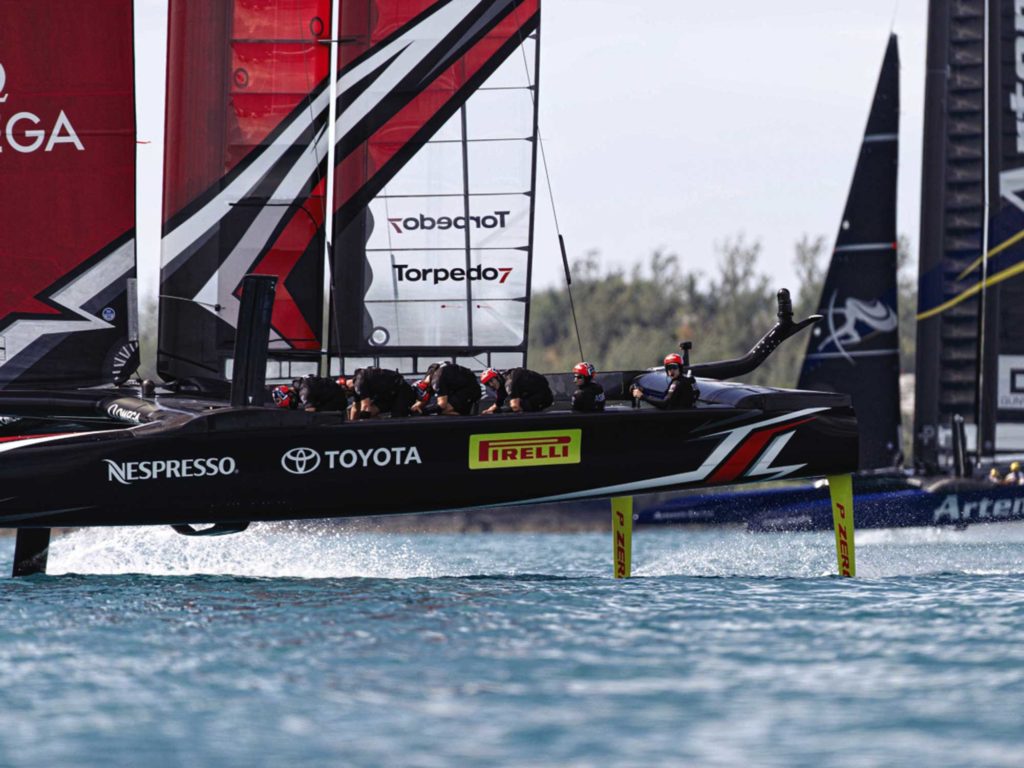
“You learn more when you get beaten than when you win,” says Peter Lester, who sailed as tactician on KZ1, on Chris Dickson’s TAG Heuer in 1995, and has remained close to New Zealand’s cup history as a television commentator. “It was really painful, but 1992 set up New Zealand Challenge to win in 1995.”
Round-the-world sailor Peter Blake took over management, and shifted from a design-driven campaign to asking the sailors—notably Russell Coutts and Brad Butterworth—what they needed in order to win. Under the Team New Zealand mantle, the Blake-led 1995 campaign in San Diego took a 5-to-0 sweep, which they then repeated in Auckland in 2000.
Successes and massive public support encouraged another longevity factor—loyal corporate, individual and even government financial backing. State sponsorship ran during the nine years of Labor Prime Minister Helen Clark’s leadership from 1999 to 2008.
From a 5.6 million NZD contribution to the team for the 2003 defense in Auckland, backing grew to nearly 34 million NZD for the 2007 challenge in Valencia, Spain. There, a day after ETNZ’s second consecutive Cup final loss, 5-to-2 to Alinghi, Clark’s government committed 10 million NZD to help keep the team together for a new tilt.
For Clark, taxpayer funding wasn’t about the razzle-dazzle associated with the Cup circus. “I’m not from a sailing family; I grew up on a farm. I wouldn’t know one end of a yacht from the other,” Clark says, when asked what lay behind the decision to fund. “Small countries struggle for visibility. There are things you are good at and have a global profile in—you need to get in behind them and leverage off that for your country and its exports and reputation.”
Team New Zealand’s 2003 defense in Auckland was used by the government to showcase tourism and economic opportunities, and Valencia in 2007 and San Francisco in 2013 became trade shows to promote New Zealand industry. Clark is now ETNZ’s patron.
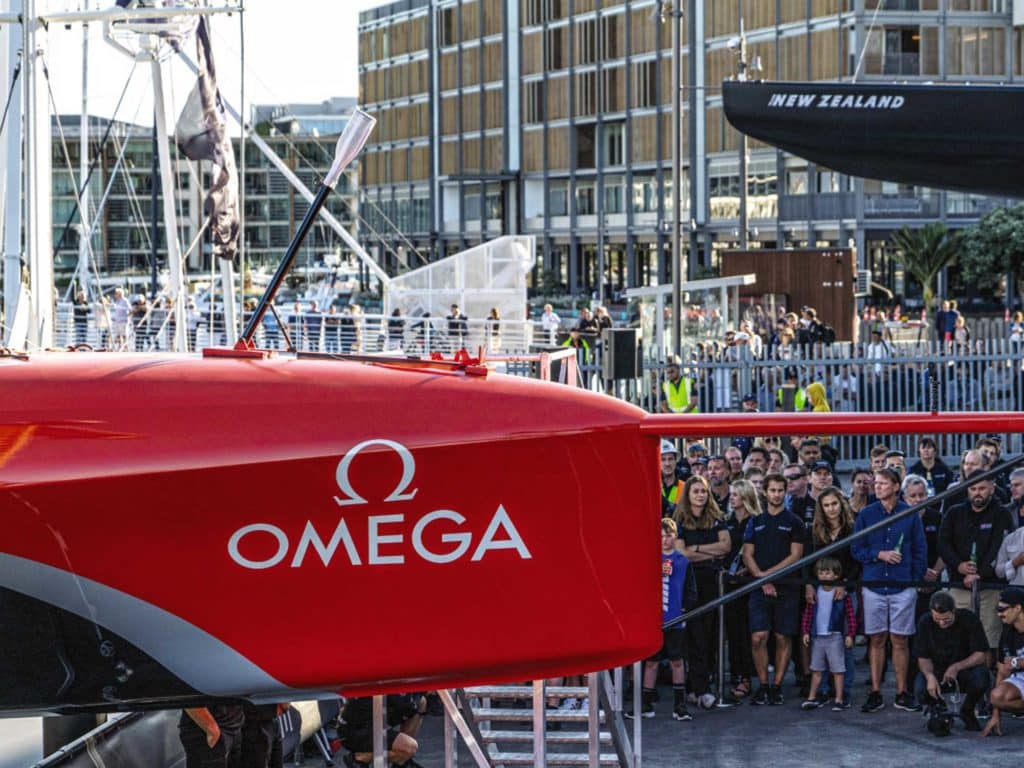
While other teams have normally been built around a wealthy backer, ETNZ’s endurance is supported by long-standing corporate and individual-patron cash. Toyota is marking 20 years of sponsorship, and its former New Zealand managing director Bob Field is part of the brain trust on the team’s board of directors.
The board chair is Sir Stephen Tindall, who launched New Zealand’s equivalent to Walmart—The Warehouse—in 1982, and is now a prominent philanthropist. The team principal, Swiss-Italian multimillionaire businessman Matteo de Nora, has been a backer since the 2003 campaign, officially honored becoming a “Companion of the New Zealand Order of Merit” in 2011 for his backing. After back-to-back Cup wins, Team New Zealand was jolted by the fatal shooting of Blake in 2001, and the defection of the core of the sailing team to Swiss billionaire Ernesto Bertarelli’s Alinghi, which used that collective experience to humiliate the Defender in 2003. Design got the upper hand at TNZ: NZL82 featured an innovative hull appendage of “hula,” and on the morning of the first race, a rumor swept the media center about the time gain the hula would bring.
The reality was different. In rough seas, NZL82 quickly took on water, and television viewers watched in disbelief as the crew used a blue bucket to try to bail it out—until the rigging broke. The mast broke in Race 4. Alinghi took the series 5-to-0.
“That 2003 boat was a disaster, too tricky; the boat fell apart,” says Shoebridge, who was with the American One World syndicate for that regatta.
“We made decisions through the 2003 campaign that were poor—too risky—and we saw breakages and reliability issues with the boat,” says Ray Davies, who was then on his first Cup campaign, serving on the weather team.
Grant Dalton stepped in to lead the “comeback” campaign in Valencia in 2007, bringing Emirates on board as the lead sponsor. Shoebridge joined him in the operations role. The fragility of the 2003 boats dulled the innovation that had often been a hallmark of the New Zealand challenges. “The 2007 challenge was a step in the right direction,” Shoebridge says. “But the underlying thinking was that we should never break, so there was a caveat about that—the pendulum swung a bit the other way.”
ETNZ climbed through the challenger series to lose 5-to-2 to its nemesis Alinghi in the Match, and had to wait for BMW Oracle to beat Alinghi in the 2010 Deed of Gift contest before contesting the next Cup in 2013, in San Francisco. Innovation played a big early role in 2013, as ETNZ secretly got the AC72 catamaran foiling, but spy photos alerted Oracle just in time to match the development. Then, while ETNZ built a seemingly invincible lead in the Match, the conservative side of its campaign tipped the scales Oracle’s way.
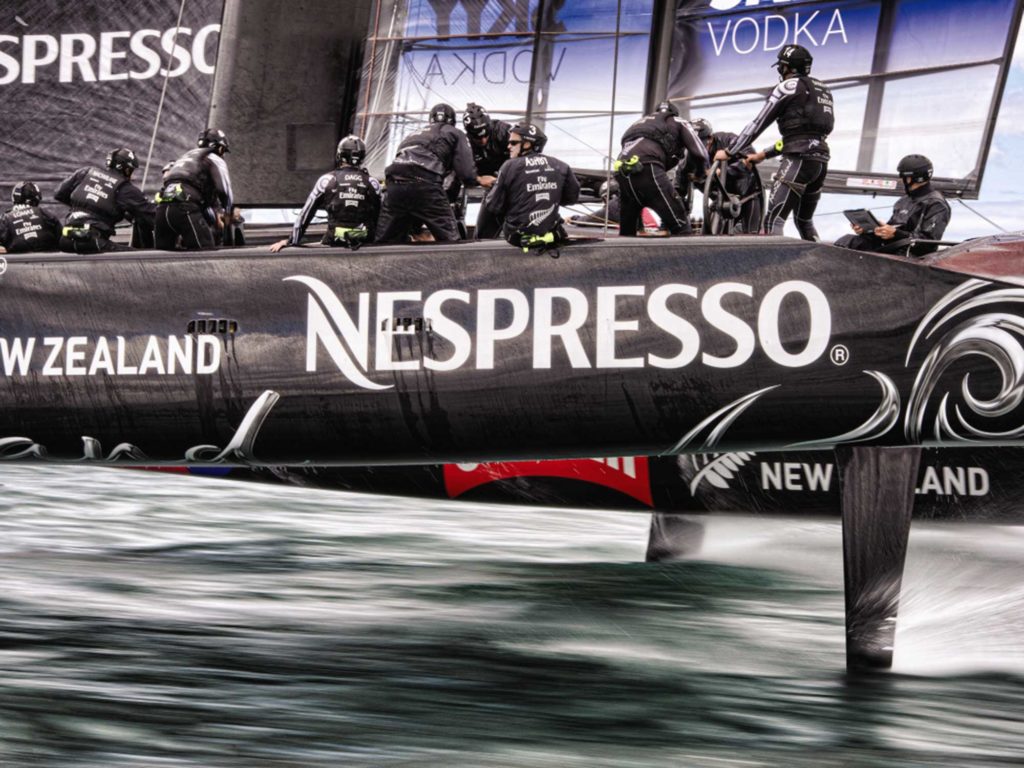
“We thought we had a lot things right throughout that whole campaign, but it can slip away from you as well at the last moment,” Davies says.
ETNZ built an 8-to-1 lead in the best-of-17 series, but needing just one more win, lost the next eight races, and with that, its near-certain shot at redemption. “Everyone was foiling downwind, but the concept of foiling upwind was still relatively new, and Oracle did a better job of pushing that side of the development right at the 11th hour,” says Davies, who was then tactician alongside skipper Dean Barker. “Once they were able to foil better than us upwind, it was game, set and match.”
It was what Lester called the balance, or imbalance, of science and sailing: “The upshot was they ran out of ideas, or the boat was actually dated before it went racing. Oracle had a better boat, but it took them longer to learn how to sail it.”
“One of things we’ve said after San Francisco is, you just have to keep developing and evolving,” Davies says. “We’d put a lot of emphasis on reliability and not changing stuff toward the end.”
It wasn’t just the cumulative lessons of unsuccessful campaigns that ETNZ took to Bermuda in 2017, but again the challenge of thin funding, and a new cycle of change. The uncertainty for a while of where the 35th Cup would be sailed hurt the sponsorship effort, and the choice of Bermuda—distant from New Zealand’s export markets—ruled out any promotion-based government funding.
“Real uncertain times, and for quite a while, finances were a real issue for the team,” Davies says. “That created its own problems, and we ended up losing a lot of core people again.”
The popular Barker, who skippered three campaigns, lost his role at the helm and opted to leave, joining Japan’s Softbank, as did design head Nick Holroyd.
“We still kept a nucleus of people we thought were key, around the development of the innovation side of things,” Davies says.
The changes opened the door to a new generation of sailors, notably Olympic and world champions Peter Burling and Blair Tuke.
For Tuke, stepping into ETNZ’s culture was a change from a career in which he and Burling already had four 49er world titles (now six) and Olympic silver and gold medals.
“Americas’ Cup is about the years beforehand, with racing at the end,” Tuke says.
Burling and Tuke, along with other Cup sailing debutants, were at the sharp end of ETNZ’s boldest leap into innovation.
“When we went to Bermuda, we unshackled ourselves from all that [caution] because we had nothing to lose,” Shoebridge says. “It’s often said we have been innovative in certain ways—a lot of that comes through budget. On a restricted budget, it forces you to think outside the box and have a lot of conviction in your decisions.
“That was really clear in Bermuda. We were late, really late, getting on the water—nearly a year later than some teams—so we knew we had to trust our design tools and the path we were taking.”
Shoebridge describes the move to have pedal-powered hydraulics, or “cyclors,” as a decision that just seemed smart. “The feeling for that campaign was that we were behind; we were not going to catch up by sailing more or sailing better or outsailing them. We actually had to try to get ahead on the design side. That allowed us to take more risks than we would have in the past.”
The way the New Zealanders sailed the AC50 was also different. Tuke’s focus was on controlling the “flight,” the foils and ensuring that the boat maintained the right height.
“In Bermuda, I was the only one in this role; the others were helming and doing flight control as well,” Tuke says. “A flip is that all teams have dedicated flight controllers now.”
ETNZ dispatched Oracle Team USA 7-to-1. Bermuda was no cruise though; ETNZ banked the experiences of a catastrophic capsize during the second day of the challenger semifinals, and having to replace a broken wingsail immediately before another race.
Three years on, Tuke sees differences in his second campaign compared with 2017, where he and Burling had shouldered a bigger leadership role in a team with other newcomers. “A lot of guys have taken more responsibility and spread that out—coming back this time is really about building on Bermuda,” he says.
Sailing a critical regatta at home is also a rare experience for Tuke, and is something the team is careful about. “It certainly has both positives and negatives—just being aware there are differences is the first thing,” he says, but he has had practice. “The 49er World Championships were here last year after having many regattas overseas in the past 10 years, so that was about having to perform on your home turf.”
Continuity and longevity have also had other benefits for ETNZ. “You never have to start from scratch, which is a big thing,” Shoebridge says. “It takes a long time to put a team together and have it meshing well. To always have the nucleus to start with and build or manipulate it to how you want it to be is a good thing for us.”
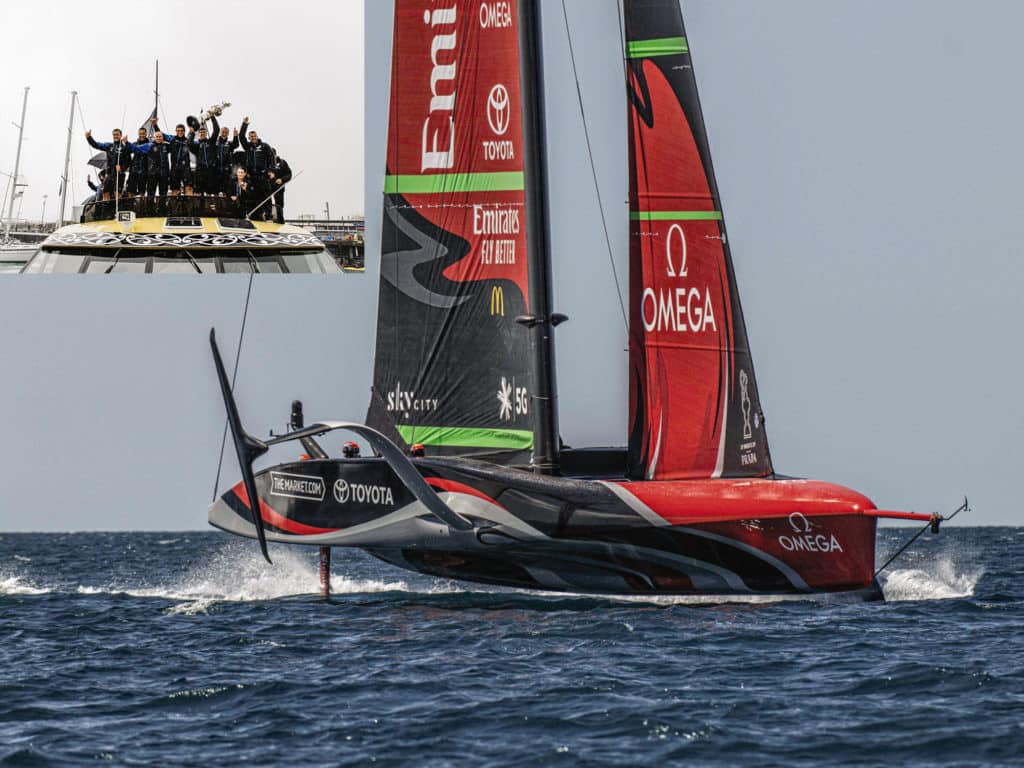
Dan Bernasconi, head of the design team, has been instrumental in changing the way the design team works, Shoebridge says, especially with tackling the unprecedented AC75. ETNZ is not complacent about the strength of the three challengers—INEOS Team UK, newcomer American Magic, and returning challenger Luna Rossa—in the clash of the radical new AC75 foiling monohulls.
“A new class is the best opportunity for challengers, no question, because we are all starting from the same point—I don’t think there’s a huge advantage anymore,” Shoebridge says. “All of these teams started designing the day the rule came out, so they are all strong. I don’t think there’s a lot in it.”
ETNZ’s challenge, therefore, is to take those decades of lessons of defeat and success, and see whether they apply in the new, almost-aerospace era of the AC75.









